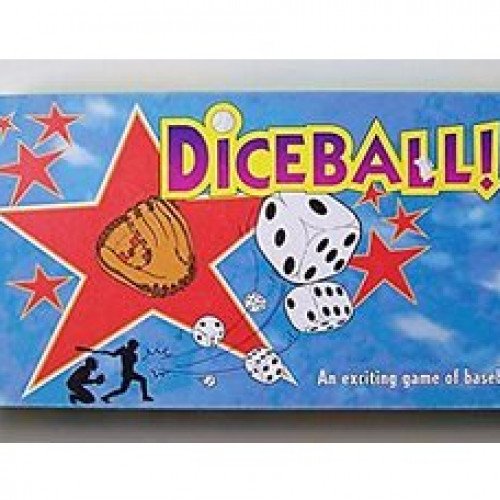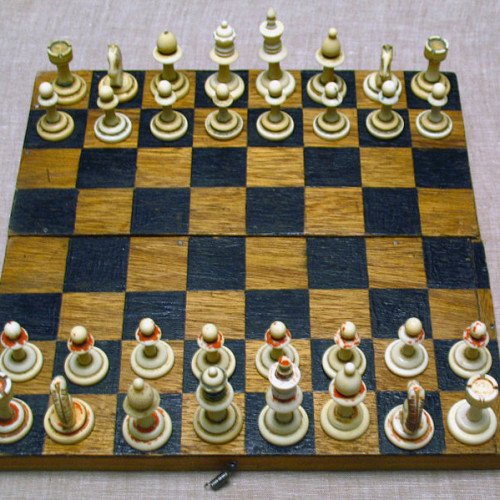DICEBALL VS SHATAR

DICEBALL
Diceball! is a board game in which two players roll dice to simulate a baseball game, one representing the visiting team and the other the home team. Both players use the dice to throw the baseball from the mound to the plate and field the ball on defense. Diceball! was designed to mirror the statistical reality of baseball. A regular game of Diceball! without extra innings lasts about 45 minutes. The game was designed in 1979 on a pizza box by a 16-year old Daniel Girard from Rawdon, Québec, while the Montreal Expos were chasing the pennant in the National League. Girard brought his game to his high school, where he organized tournaments with other students. Given the popularity of the game in his school, Girard also brought his game to university where it also became popular. The interest created by the game was noticed by entrepreneur Louis Desjardins, who launched the game with Girard. To start the game, the visiting team puts a pawn (as a batter and eventually runner) in the batter's box, to get the pitcher's throws. The die replaces the ball. The pitcher rolls the die until either the batter is struck out, the batter is walked, or the ball is hit. If the ball is hit, the offensive team rolls a die to determine the number of dice to be used to hit the ball. The number of dice indicated are rolled and added up. Numbers from 1 to 36 show the location where the ball is hit and the ball is placed on the game board. If the ball is hit on a circle, the ball was hit in the air and an out is recorded. If the ball is hit on a number in a cloud, it is a ground ball and that the batter will have to try to reach a base before the defense throws to that base. If the ball is hit to a star-shaped zone, the runner starts to run around the bases while the defence recovers the ball on the star. If the stars are from 27 to 36 it is a home run and all runners score. Every batter who runs around the bases and reaches home plate before three outs scores a run. As soon as three outs are recorded, stranded runners are removed from the bases. The teams trade places: the defense becomes the offense.
Statistics for this Xoptio

SHATAR
Shatar (Mongolian: ᠮᠣᠩᠭᠣᠯ ᠰᠢᠲᠠᠷᠠ Monggol sitar-a, "Mongolian shatranj"; a.k.a. shatar) and hiashatar are two chess variants played in Mongolia. The rules are similar to standard chess; the differences being that: The noyan (ᠨᠣᠶᠠᠨ, lord) does not castle. The küü (ᠬᠦᠦ, pawn) does not have an initial double-step move option, except for the queen pawn or king pawn. In old shatar rules, a pawn that reaches its eighth rank must promote to half-power tiger. But a pawn could step back to its sixth rank to promote to all-power tiger. It moves like a queen. The baras (ᠪᠠᠷᠰ or ᠪᠠᠷᠠᠰ, tiger; Persian: fers) moves like a promoted rook in shogi: like a chess rook or one square diagonally. It was called half-power tiger or half-power lion in old shatar rules. In modern shatar rules, a baras moves like a queen. The mori (knight; ᠮᠣᠷᠢ) cannot deliver mate. In modern shatar rules, the mori can give mate. The bishop (teme) and rook (terge) move as they do in standard chess. The game always starts by White playing 1.d4 and Black responding with 1...d5. This is the only time in the game a pawn may advance two squares; some sources claim this initial move can optionally be made with the e-pawn. In old shatar rules, Ujimqin player must make an initial double-step move with the queen pawn; in Chahar, the king pawn. In old shatar rules, baremate is draw. In old shatar rules, one special rule is called tuuxəi, like komi in Go. A player could leave the enemy with only two pieces remaining (noyan and another piece) at the end. Then he must start making checks using the terge or baras and make consecutive checks until checkmate. Before checkmate, number of consecutive checks is the number of tuuxəi. If a player wins by checkmate as in chess, he receives only one tuuxəi. A player usually leaves the enemy with one noyan and one küü to allow time to put his pieces into good positions for making consecutive checks.